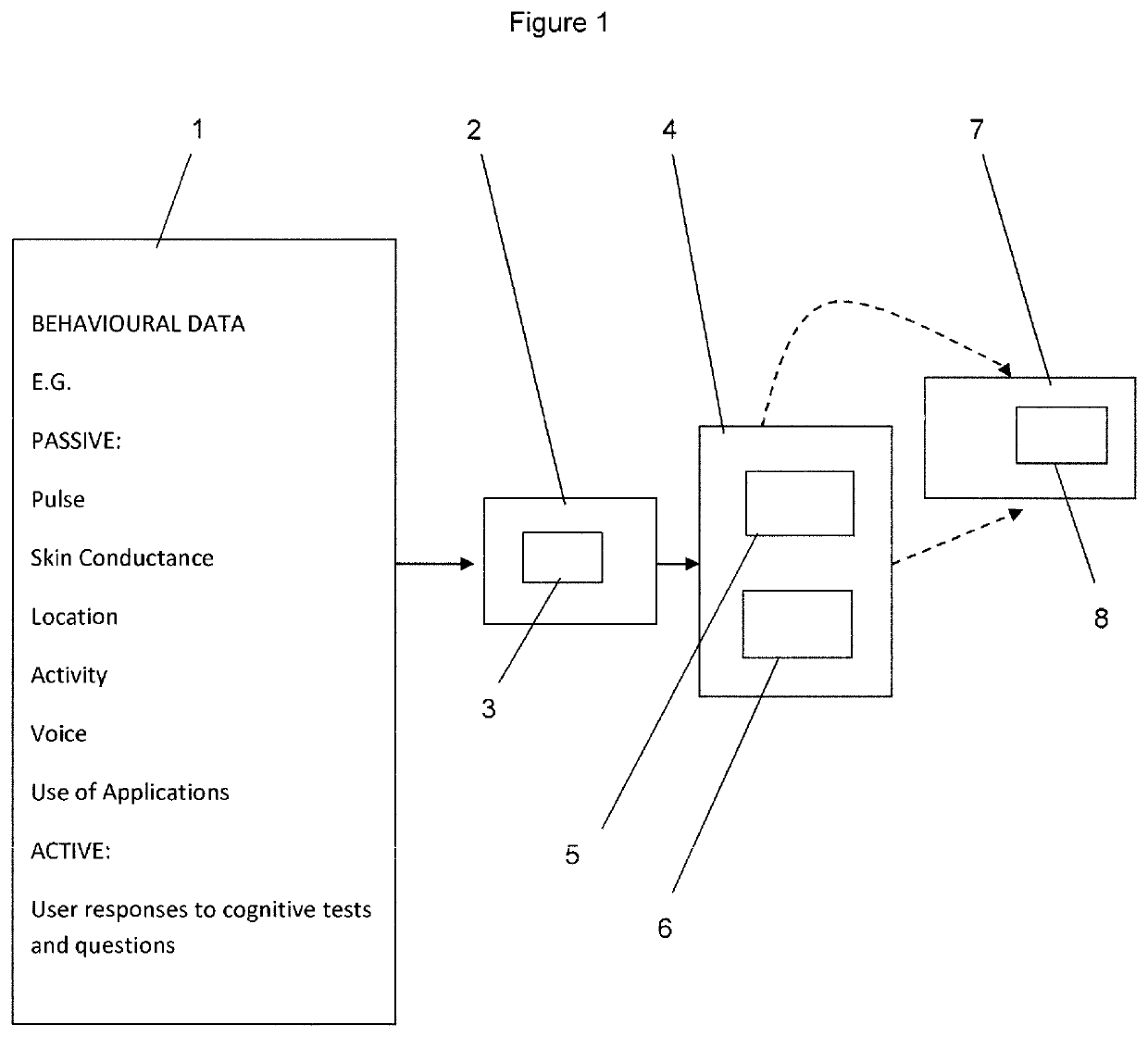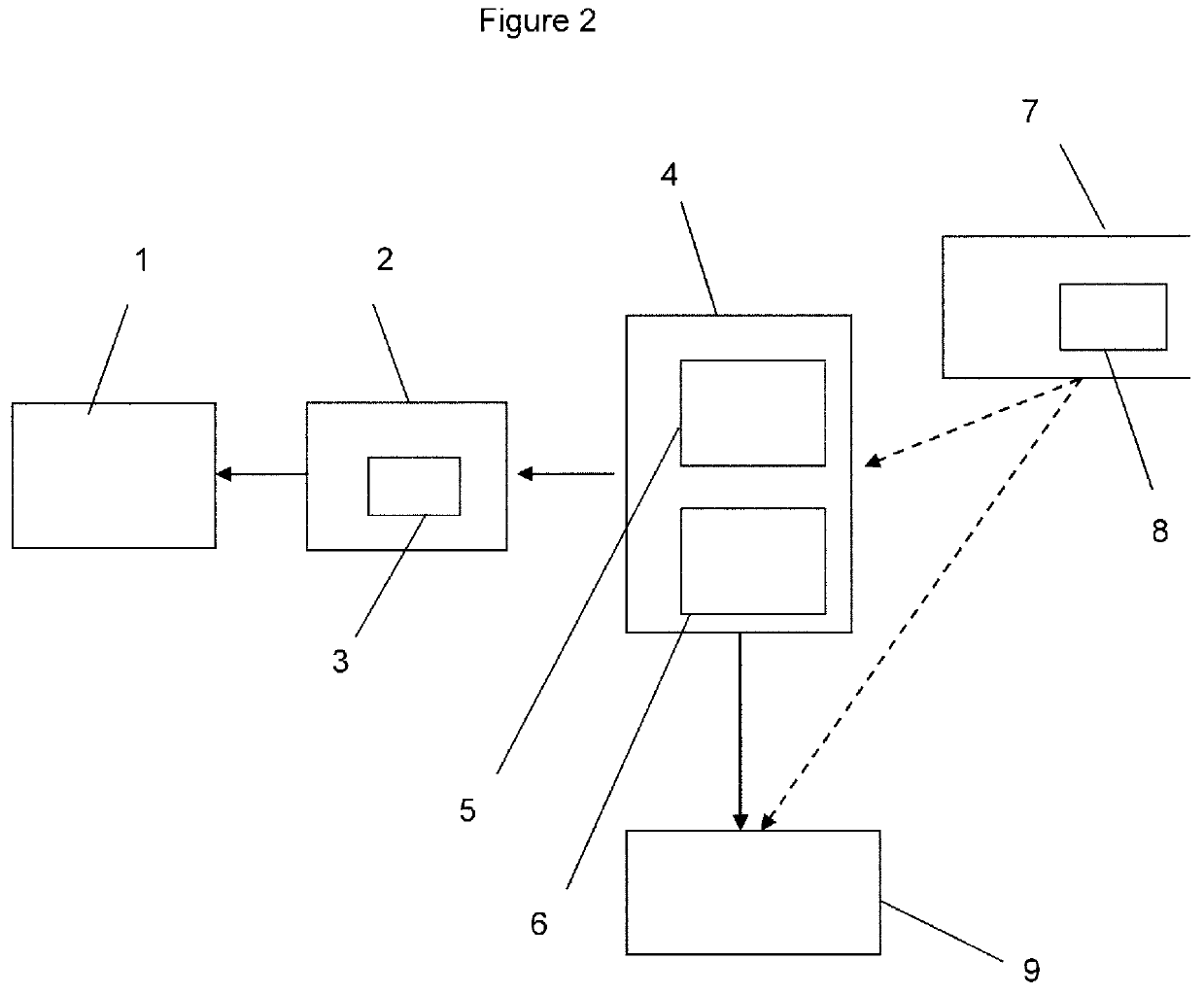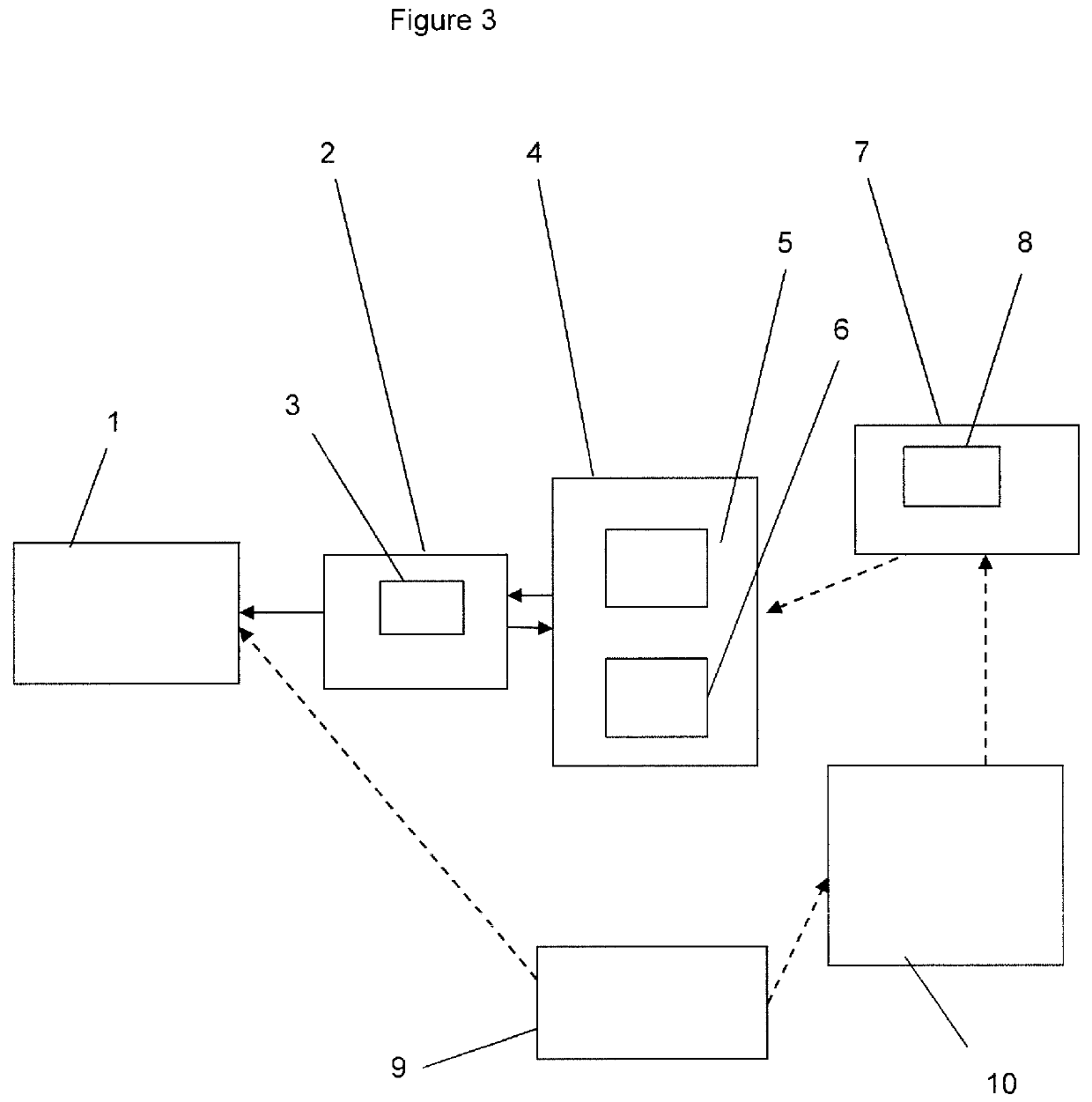Systems and methods for assessing cognitive function
a cognitive function and system technology, applied in the field of systems and methods for assessing cognitive function and symptoms of neurological and neuropsychiatric conditions, can solve the problems of not being able to provide direct access to individuals or patients in a suitable format, and affecting the accuracy of data. , to achieve the effect of reducing the incidence of false positive data
- Summary
- Abstract
- Description
- Claims
- Application Information
AI Technical Summary
Benefits of technology
Problems solved by technology
Method used
Image
Examples
example 1
Epilepsy
[0191]In one preferred embodiment of the invention, a system according to the invention is used to monitor a patient with a history of seizures. The patient may have been experiencing a worsening of symptoms or may have been prescribed new medication and the patient and doctor are therefore interested in ascertaining the impact on the course of the disease.
[0192]The wearable device is a band incorporating a sensor which is capable of monitoring skin conductance. Physical activity and location are measured via the wearable device itself which may include a GPS location device and / or accelerometers.
[0193]The sensor and the wearable device communicate with the patient's smartphone via a wireless connection, such as Bluetooth, and with a remote server via Wi-Fi or 4G signals (and over a physical backhaul network). The server stores and runs software relating to cognitive testing for epilepsy or other neurological disorders resulting in seizures. The server also stores, in a memo...
example 2
Dementia
[0199]In another preferred embodiment of the invention, a system according to the invention is used to detect and record symptoms consistent with dementia in an elderly individual. The individual may live on their own and may not be aware of, or able to recall, symptoms when in later consultation with their doctor or carer.
[0200]The wearable device may be a watch or band connected via wireless technology to a smartphone. Alternatively, the wearable device may be embedded in an item of clothing or item of jewelry or may even be implanted on the body. The sensor includes at least a GPS device and optionally an accelerometer. The GPS device is used to determine when the individual leaves their normal premises. The accelerometer detects and measures periods of physical activity and inactivity.
[0201]The system passively monitors the sensor for unusual patterns of physical behaviour. The patterns of behaviour for an individual are typically set in advance by parameters in the syst...
example 3
Multiple Sclerosis
[0204]In a further preferred embodiment of the invention, the individual's coordination is monitored by the system based on the individual's behavioural data. The behavioural data in this embodiment comprises physical screen inputs, speed of response to stimuli during phone use, and voluntary and involuntary movements monitored via a sensor comprising an accelerometer.
[0205]Parameters summarising co-ordination are measured against the individual's personal history and / or disease-based norms.
[0206]If parameters deviate by more than a predetermined amount from the individual's personal norms or meet a predetermined set of criteria defining a likely relapse, symptom questions and cognitive tests are triggered by the system.
[0207]Responses from the co-ordination, symptom and cognitive parameters are summarised and compared with reference baseline and longitudinal data for the individual and data sets for the general population and relevant population of patients to inf...
PUM
 Login to View More
Login to View More Abstract
Description
Claims
Application Information
 Login to View More
Login to View More - R&D
- Intellectual Property
- Life Sciences
- Materials
- Tech Scout
- Unparalleled Data Quality
- Higher Quality Content
- 60% Fewer Hallucinations
Browse by: Latest US Patents, China's latest patents, Technical Efficacy Thesaurus, Application Domain, Technology Topic, Popular Technical Reports.
© 2025 PatSnap. All rights reserved.Legal|Privacy policy|Modern Slavery Act Transparency Statement|Sitemap|About US| Contact US: help@patsnap.com



